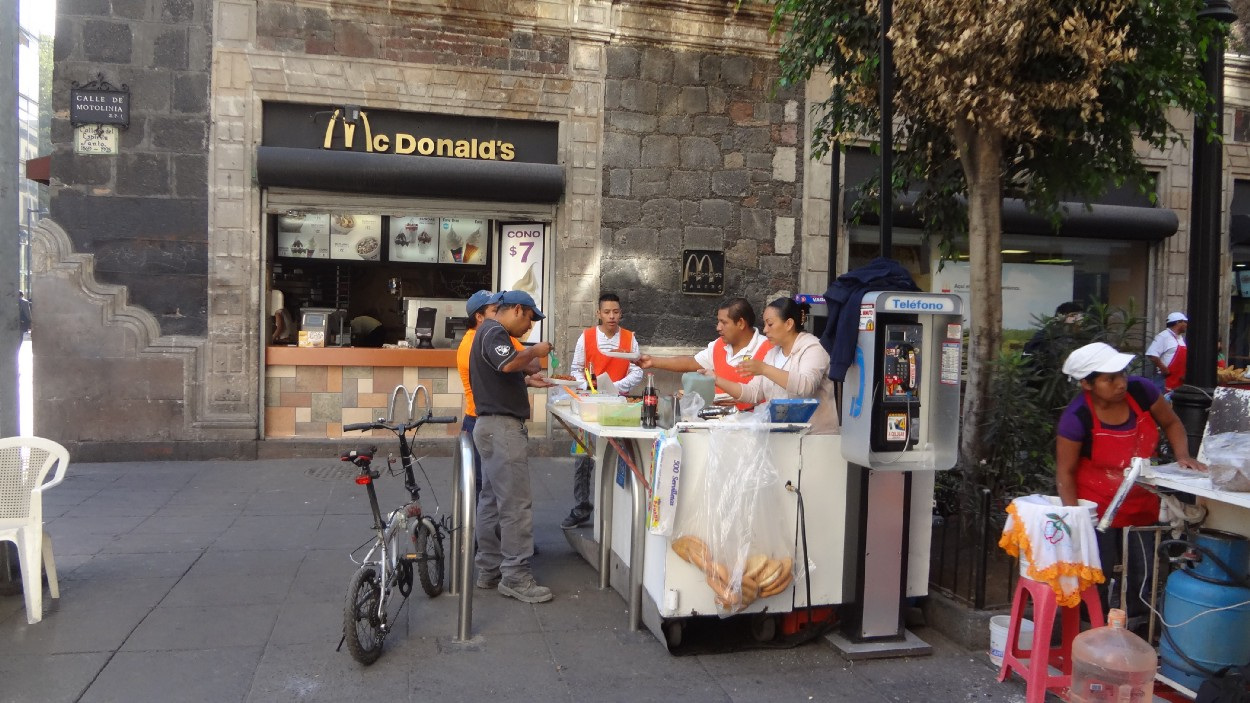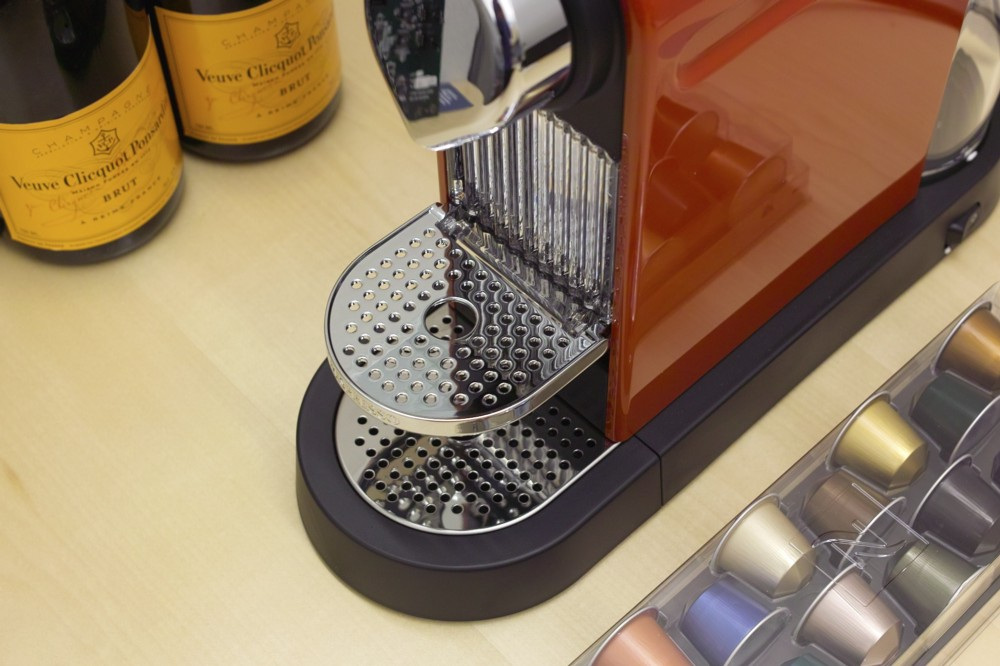
Article originally published on Medium
The bustling, chaotic streets of Mexico City almost couldn’t form a bigger contrast with the quiet grassy plains that surround the little village in the Netherlands where I grew up. Even after having spent already some two and a half years living in Mexico’s capital, I still get surprised almost every day by seeing things that seem so unfamiliar to me, yet are the most common thing for people that grew up here.
While working as a service designer for Uncommon in Mexico City, I often wonder if it actually matters where you are in the world when you design a service, and what importance culture or cultural identity has when designing a service.
In product design, culture used to be a distinguishing factor that defined for a large part the aesthetics, usage and manufacturing method of a product. Stores in different places in the world had their shelves filled with products you would have had a hard time finding outside of that specific context, as Don Norman argues in a 2012 article on the importance of culture in product design.
![]() Ritual Ewer, Japan. Via: Metropolitan Museum of Art
Ritual Ewer, Japan. Via: Metropolitan Museum of Art
Norman illustrates that nowadays however, as a result of globalization and the workings of our modern economy it has become almost impossible to tell for the consumer in what location or cultural context a product is designed or manufactured. Department stores are filled with the same kind of products regardless of where you are in the world. The question here is: does product design that represents locality or a traditional cultural identity not offer much value anymore?
And, if culture not always seems to matter in the design of a product, are other areas of design that seem to be more sensitive to culture therefore any different? Does culture matter for service design?
Why culture matters for service design
The bustling, chaotic streets of Mexico City almost couldn’t form a bigger contrast with the quiet grassy plains that surround the little village in the Netherlands where I grew up. Even after having spent already some two and a half years living in Mexico’s capital, I still get surprised almost every day by seeing things that seem so unfamiliar to me, yet are the most common thing for people that grew up here.
While working as a service designer for Uncommon in Mexico City, I often wonder if it actually matters where you are in the world when you design a service, and what importance culture or cultural identity has when designing a service.
In product design, culture used to be a distinguishing factor that defined for a large part the aesthetics, usage and manufacturing method of a product. Stores in different places in the world had their shelves filled with products you would have had a hard time finding outside of that specific context, as Don Norman argues in a 2012 article on the importance of culture in product design.
 Ritual Ewer, Japan. Via: Metropolitan Museum of Art
Ritual Ewer, Japan. Via: Metropolitan Museum of ArtNorman illustrates that nowadays however, as a result of globalization and the workings of our modern economy it has become almost impossible to tell for the consumer in what location or cultural context a product is designed or manufactured. Department stores are filled with the same kind of products regardless of where you are in the world. The question here is: does product design that represents locality or a traditional cultural identity not offer much value anymore?
And, if culture not always seems to matter in the design of a product, are other areas of design that seem to be more sensitive to culture therefore any different? Does culture matter for service design?
︎
The cultural factor
A particularly interesting example of how a seemingly small part of a service offering can have a pretty big impact on how people experience that service, is that familiar moment where a Starbucks employee asks you for your name just before writing it on a paper cup. As some of us will recognize, having a name that is somewhat difficult to pronounce or write down could result in certain feelings ranging from awkwardness to shame or foreignness, sometimes even leading to the invention of a ‘Starbucks name’.
What seems to be a well thought out part of the Starbucks service offering that aims (and in a lot of cases certainly will achieve) to create a more personal and friendly relationship between the baristas and customers, could have some undesired side effects for a certain group of people that completely changes how they experience their coffee shop visit.
One goal of standardizing the way in which the barista treats you in a Starbucks is to create familiarity: no matter where you are in the world, you get the same kind of treatment with the same kind of hot (sugary) beverages that you know. This standardized familiarity however, might feel alien and actually unfamiliar when experienced for the first time for people raised in a different cultural context. In Japan for example, Starbucks customers are not called by their names but by the items they order, because of privacy being a more delicate issue. And even in a country that might feel culturally a lot closer to the United States like the United Kingdom, one could argue that not everyone is used to an overly personal moment of interaction when buying coffee.
Starbucks having to adapt a specific part of their service in Japan in order to accommodate to a local context is an example of the relevance of the factor culture in the experiencing of a service.
︎
Understanding cultural identity to offer more ‘relatable’ service offerings
So much of traditional services are based on rituals. We could consider rituals as a collection of habits that form almost the ultimate form of expression of cultural identity: a collection of habits shared by a limited number of people that share a certain context and lifestyle. You could say that as a person, owning a certain cultural identity, you would unconsciously be used to do things in a certain way.
I remember the very first time, many years ago, that I walked into a Subway restaurant in Amsterdam. I had already heard of their concept of being able to completely customize every part of your sandwich, and it sounded like nothing I had ever seen before. I was used to having to pick a sandwich as a menu item, where someone already decided for me what type of bread I would get and what ingredients were put on it.
It sounded attractive, but the actual experience of ordering a Subway for the first time was a rather mixed one. I felt a bit uncomfortable having to face such a large number of choices to make. Having to choose from a whole list of unfamiliar ingredients while I was in a line with people waiting behind me made me feel pressured rather than positively free to choose whatever I felt like.
Nowadays when I order a Subway, I don’t feel as rushed anymore as before. I am familiar with the concept, know at what moments I need to take which decision, and roughly know what type of options are available to choose from along the way. That tells me that the reason why I felt uncomfortable in the initial experience was because of a lack of overall familiarity with the service offering.

Traditional street food in Mexico City, VasenkaPhotography, licensed under CC BY 2.0
I would argue that we as service designers ought to explore the cultural identity of the people we design for. Why, when we map out the journeys that people undertake when using a service, shouldn’t we also map out the rituals that people come across in their daily lives? Understanding these could help to understand what expectations people have when for example experiencing a service offering in a certain context for the very first time. It could help to eventually design services that both feel more familiar when experiencing them, as well as avoid to exclude certain groups of potential users that might otherwise feel alienated by aspects of the service. It could help to ‘invoke’ a feeling of ownership of the service being used; people can relate better to what they consume.
Imagine designing an almost flawless looking service experience; you create this perfect blueprint that solves all the pain points you identified in your rigorous ethnographic investigation. You might end up with a completely original service offering that in its entirety is very efficient and in theory pleasurable to experience. What could still be lacking is familiarity, you might be excluding groups of people that would find the experience overwhelming or alienating just because it doesn’t correspond with the way they are used to do things.
If we manage to fully consider the cultural identity of the people we design for during the design process and are able to translate that into innovative service offerings that still feel familiar enough to use, we could offer something of great value: experiences that do not exclude but rather feel like integrated into local culture. Because culture does matter when the goal is to offer a service that people can identify with.
Imagine designing an almost flawless looking service experience; you create this perfect blueprint that solves all the pain points you identified in your rigorous ethnographic investigation. You might end up with a completely original service offering that in its entirety is very efficient and in theory pleasurable to experience. What could still be lacking is familiarity, you might be excluding groups of people that would find the experience overwhelming or alienating just because it doesn’t correspond with the way they are used to do things.
“Everything we design is a response to the specific climate and culture of a particular place.”
— Norman Foster
If we manage to fully consider the cultural identity of the people we design for during the design process and are able to translate that into innovative service offerings that still feel familiar enough to use, we could offer something of great value: experiences that do not exclude but rather feel like integrated into local culture. Because culture does matter when the goal is to offer a service that people can identify with.
